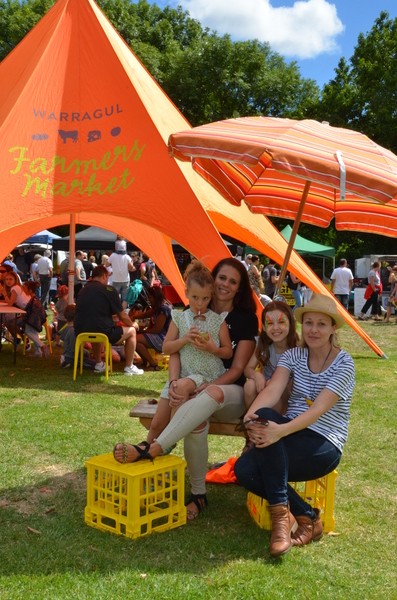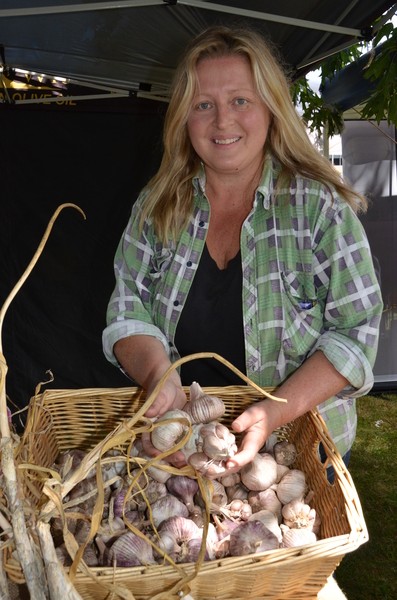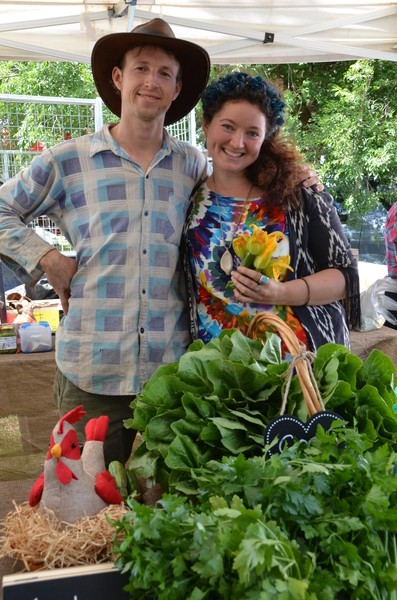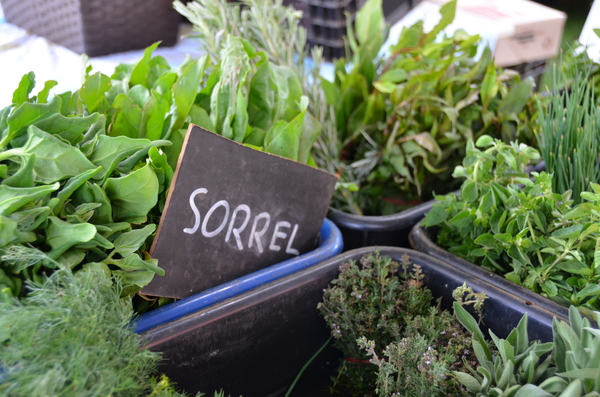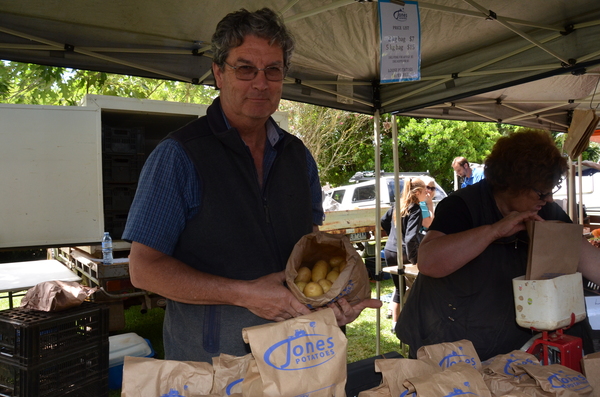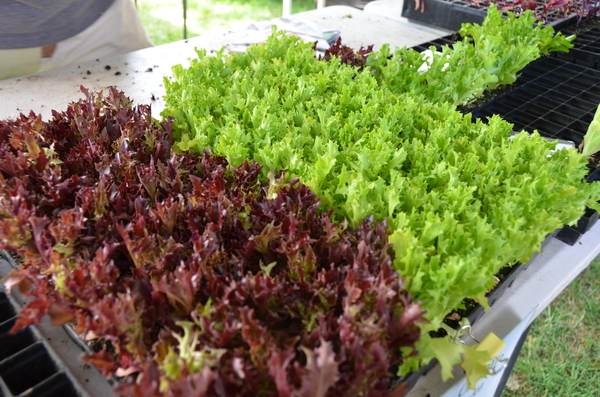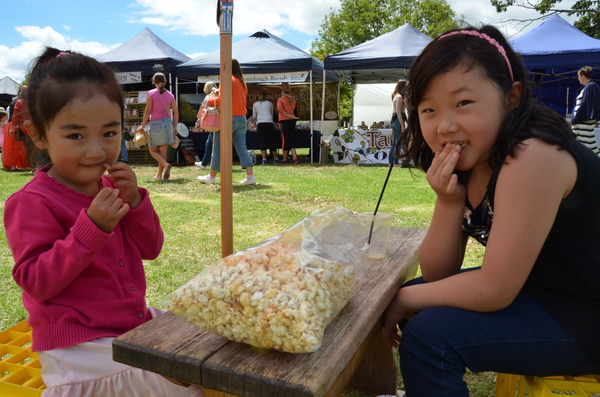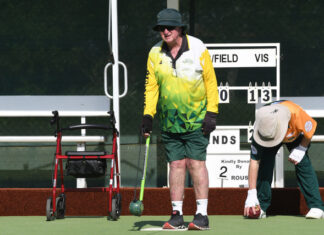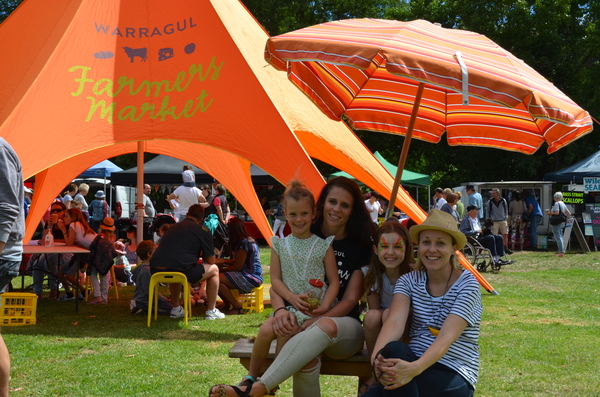
The Warragul Farmers’ Market is more than a chance to pick up fresh produce. Founders Sallie Jones and Erika McInerney tell Casey Neill that the monthly event is bringing the community together.
“For rural communities, farmers’ markets are like a heartbeat.”
Warragul’s Erika McInerney found it easier to access Gippsland-grown produce at farmers’ markets in Melbourne than in Gippsland itself.
“I grew up in Gippsland,” she said.
“I lived in Melbourne, where I had a farmers’ market right near my house and most of the produce was from Gippsland.
“When I moved down here I was really disappointed I couldn’t get any Gippsland produce in the middle of town.
“It’s crazy that all this beautiful food gets taken out of town and gets replaced by stuff from everywhere else.”
Erika met Sallie Jones through a mothers’ group.
“Miranda Sharp – she runs all the Melbourne Farmers’ Markets – Facebook messaged me because I’d had previous involvement with her markets as a stallholder,” Sallie said.
“She said we should start a Warragul market.”
That was in 2011. The pair launched the monthly Civic Park event in November 2013.
“They’ve changed the way this town works,” market volunteer and Casey Cardinia Libraries CEO Chris Buckingham said of Sallie and Erika.
“They’ve brought all these people together.
“People come from miles away.
“I’ve got friends from Moe and I see them here all the time.
“They like the food but they also like the community.
“They catch up with people. It’s a meeting place.”
Sallie said that creating a community hub was among their aims for the project.
“It’s not just a shopping experience, it’s a community space where people can connect and belong and meet new people,” she said.
“Everyone looks forward to it every month.
“You see a lot of the same people coming and meeting.
“It’s very different from a Melbourne market because of the sense of community.
“For rural communities, farmers’ markets are like a heartbeat.
“I always like living in a place that has a strong sense of community, so why not create it?”
Erika said: “One of the other outcomes was to bring more people into Warragul, to support the town, support the retailers.”
“There’s evidence that other towns that started farmers’ markets made a massive difference to the town.
“The retailers’ association and the business group and most of the shops have been really supportive
there.”
She said the market had injected millions into the local economy over the past three years.
“When those millions of dollars go into the pockets of these people and they put their money into their local towns, it’s a really powerful and really good thing for the local economy to keep that money here,” she said.
“If they come here and they spend $100 every month, that’s $100 that goes back into little communities like Mirboo North and Wattle Bank and Neerim South.
“That’s a good reason for every town to do something like this.”
Education was another goal.
“There’s a fundamental difference in the way that you feel about your food when you know where it’s grown,” Erika said.
“You feel grateful and connected to your food.
“Even the stuff you buy in the supermarket was farmed by a person.
“When you lose that connection you lose that respect for the food.
“Everybody needs to eat. It’s a fundamental need that we have.
“You lose the importance, or that understanding off what goes into it.
“It just appears like magic.
“Something changes in you when you start to get to know the people who grow your food.
“We have prioritised chemical-free and organic farming where possible.
“It means there are a lot of small farmers who can have an outlet to sell their stuff.”
They’ve been involved with open days at local farms to expand the education experience.
“It’s about connecting people to where their food’s from,” Sallie said.
“A lot of people live in a rural community but don’t get to go behind a gate.
“I wanted to know where my food was coming from.
“I like buying food directly from farmers.”
Sallie and Erika visited stallholders and shared their stories through social media in the lead-up to the market’s launch.
“Our kids were small so we gave our kids an education by going on to these farms and profiling every farm,” Sallie said.
“Our kids loved it.”
Erika said: “And it was really good publicity.”
“People were wanting to hear these stories.
“They were wanting to hear where their food was coming from.
“None of the other farmers’ markets were really doing anything like that.
“When we started, thousands of people came through.”
It was a relief when their promises rang true following two years of hard work.
“In the beginning we were chasing and calling and promising people ’It’s going to be big, it’s going to be awesome’,” Erika said.
“We were both not working, we had little kids, neither of us like to sit still.
“It was a really fun project to get started.
“It’s been amazing for us and our own careers and our own businesses.
“We’ve made a lot of amazing networks and met a lot of people and had a lot of opportunities we wouldn’t have had.”
The first step was applying for funds to put their ideas into action.
“There’s grant money available through RDV (Regional Development Victoria),” Erika said.
“They’ve got a thing with the Victorian Farmers’ Markets Association to provide start-up money for markets.
“We wandered the streets talking to shops, community consultation, dealing with council – the Baw Baw Shire were really great.”
A suitable site became a sticking point and held up the project for months.
The council suggested Civic Park after the space successfully hosted a couple of other community events.
“As soon as they said to us that we could have this site, we were off,” Erika said.
“There was a lot of ringing around on the phone trying to find stallholders.
“We had a few good starters.
“We had 25 to 30 stalls we knew we could start with.
“In the end when we started I think we had 63.”
They maintain product diversity by allowing only two stallholders per product category.
Their most unusual item is saffron.
“It’s grown out just near Mirboo North,” Erika said.
“They’re doing really, really well.
“There’s a few in Tasmania but not really any others around here.”
There’s also organic vegetables, artisan bread, cakes, eggs, fruit, plants, cider, sauces and more.
Ready-to-eat offerings range from Polish pierogi to Japanese gyoza, and Raj from Drouin’s Albert’s Kitchen serves up a filled South Indian pancake called dosa.
It’s all available from 8.30am to 1pm on the third Saturday of each month.
Erika said a switch to weekly would cost the market “that event feel” and start to cause problems with other retailers in town.
“We have a dedicated team of volunteers and a committee that we absolutely could not do this without their help every month,” she said.
The team includes their kids, Sallie’s aged 3, 5 and 7 and Erika’s aged 5 and 7.
“Our kids love it here,” Sallie said.
“We’re really excited in terms of getting our kids that exposure.
“They come and help set up in the mornings.”
She said the kids were looking forward to trying their hands at market trading through a one-off kid-run event at Warragul Primary School in March.
“They want to become little stallholders,” Sallie said.
Erika and Sallie make an effort to get themselves and the market involved with the wider community, from Warragul Business Group events to supporting other foodie initiatives.
“The good thing about being in this region is an interest in food and local food and slow food,” Erika said.
“We help out or we get involved or we offer advice.
“It always makes me really happy when someone else has a really good idea in that food space.”
They’re determined to keep good ideas flowing into the market, too.
“Every month we have to reinvent the market,” Sallie said.
“You can’t just have a market and keep it still.
“We’re always looking for extensions and collaborations and inviting new things in and new stalls.”
They’re making plenty of connections through social media, boasting nearly 10,000 Facebook followers and almost 3000 on Instagram.
“That’s a really nice way to see the kind of interaction we get,” Erika said.
They often click through to followers’ profiles to see where they’re from.
“It really does bring people from all over the place,” she said.
“Over the summer months we have somewhere around 2000 to 2500 people, maybe a bit more.”
Numbers are pretty steady year-round, with the market dodging rainy days for its whole three years.
“Weather can make or break a market,” Sallie said.
“We’ve never had a rainy day, in three years.”
Erika said: “It’s become a bit of a joke with our stallholders that market day is always a nice day.”

